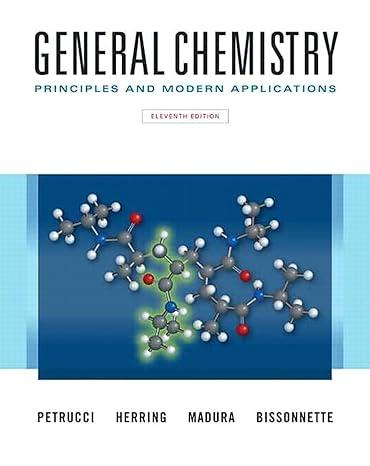A hydrate of copper(II) sulfate, when heated, goes through the succession of changes suggested by the photograph.
Question:
A hydrate of copper(II) sulfate, when heated, goes through the succession of changes suggested by the photograph. In this photograph,
(a) Is the original fully hydrated copper(II) sulfate;
(b) Is the product obtained by heating the original hydrate to 140 °C;
(c) Is the product obtained by further heating to 400 °C; and (d) is the product obtained at 1000 °C.

A 2.574 g sample of CuSO4 · x H2O was heated to 140 °C, cooled, and reweighed. The resulting solid was reheated to 400 °C, cooled, and reweighed. Finally, this solid was heated to 1000 °C, cooled, and reweighed for the last time.
Original sample 2.574 g
After heating to 140 °C 1.833 g
After reheating to 400 °C 1.647 g
After reheating to 1000 °C 0.812 g
(a) Assuming that all the water of hydration is driven off at 400 °C, what is the formula of the original hydrate?
(b) What is the formula of the hydrate obtained when the original hydrate is heated to only 140 °C?
(c) The black residue obtained at 1000 °C is an oxide of copper. What is its percent composition and empirical formula?
Step by Step Answer:

General Chemistry Principles And Modern Applications
ISBN: 9780132931281
11th Edition
Authors: Ralph Petrucci, Jeffry Madura, F. Herring, Carey Bissonnette





